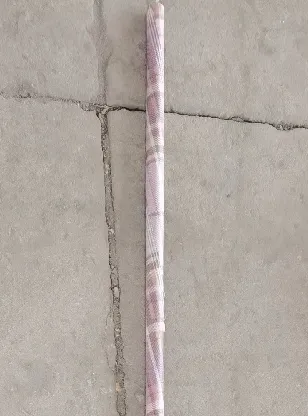loading...
- No. 9, Xingyuan South Street, Dongwaihuan Road, Zaoqiang County, Hengshui, Hebei, China
- admin@zjcomposites.com
- +86 15097380338
- Welcome to visit our website!
Advantages and Applications of GFRP Rods in Modern Construction Projects
The Versatility and Benefits of GFRP Rods in Modern Applications
Glass Fiber Reinforced Polymer (GFRP) rods are increasingly becoming a preferred material in various engineering applications due to their unique properties and benefits. These rods, made of composite materials that combine glass fiber with a polymer matrix, offer a range of advantages over traditional materials such as steel and concrete. This article explores the features, benefits, and potential applications of GFRP rods, shedding light on their significance in modern engineering.
One of the primary advantages of GFRP rods is their exceptional strength-to-weight ratio. GFRP rods are significantly lighter than steel rods, which makes them easier to handle and install, particularly in large-scale construction projects. This lightweight characteristic not only reduces labor costs but also minimizes transportation expenses and facilitates quicker construction timelines. This feature alone makes GFRP rods an appealing option for civil engineering projects, where efficiency and speed are often paramount.
.
Moreover, GFRP rods exhibit remarkable tensile strength, which allows them to withstand significant loads without deformation. This characteristic is crucial in construction and structural applications, where reliability is essential. For example, in reinforced concrete structures, GFRP rods are increasingly used as alternative reinforcements to traditional steel bars. When embedded in concrete, GFRP rods enhance the tensile capacity of the structure while preventing potential issues associated with steel, such as rust and corrosion.
gfrp rod

Additionally, GFRP rods are also non-magnetic and non-conductive. This property makes them useful in applications where electromagnetic interference must be minimized, such as in the construction of tunnels and bridges near sensitive electronic equipment. Their non-conductive nature also eliminates the risk of electric hazards, enhancing the safety of structures where GFRP rods are employed.
The flexibility of GFRP rods in design applications is another key advantage. Engineers can customize the size, shape, and mechanical properties of GFRP rods, allowing for tailored solutions to meet specific project requirements. This versatility extends to various applications, including infrastructure development, transportation, and even aerospace engineering. As the demand for lightweight and durable materials continues to rise, the role of GFRP rods in innovative engineering solutions is expected to grow.
The sustainability aspect of GFRP rods cannot be overlooked either. As the world shifts toward more sustainable construction practices, materials that promote environmental stewardship are gaining traction. GFRP rods are often made from recycled materials and can be fully recycled at the end of their lifespan, contributing to a circular economy.
In conclusion, GFRP rods represent a significant advancement in material technology, offering a unique blend of strength, durability, corrosion resistance, and versatility. As industries continue to evolve and seek more efficient and sustainable materials, the adoption of GFRP rods is likely to increase. Their growing presence in civil engineering, construction, and other fields underscores a pivotal shift toward innovative solutions that address modern challenges. As engineers and architects embrace these advanced materials, we can expect to see a transformation in the design and construction of resilient infrastructures that meet the demands of the future.
-
The Rise of FRP Profiles: Strong, Lightweight, and Built to LastNewsJul.14,2025
-
SMC Panel Tanks: A Modern Water Storage Solution for All EnvironmentsNewsJul.14,2025
-
GRP Grating: A Modern Solution for Safe and Durable Access SystemsNewsJul.14,2025
-
Galvanized Steel Water Tanks: Durable, Reliable, and Ready for UseNewsJul.14,2025
-
FRP Mini Mesh Grating: The Safer, Smarter Flooring SolutionNewsJul.14,2025
-
Exploring FRP Vessels: Durable Solutions for Modern Fluid HandlingNewsJul.14,2025
-
GRP Structures: The Future of Lightweight, High-Performance EngineeringNewsJun.20,2025
